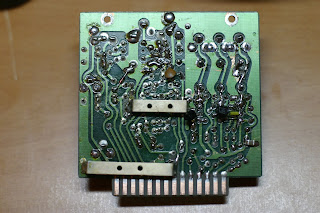I've been licensed for about 2 years now, with the call sign VE3IAC. My radio station is here in Ottawa and although I'm in the suburbs I have space to put up a 30ft tall 40m to 6m multi-band vertical and a 120ft 80m to 6m offset center fed dipole.
The rigs here in the shack span from a 2008 all solid state rig to a 1970's hybrid rig w/ a tube based final.
The Yaesu 2000D is a very competent 200W base rig, it is very fun to play with and has more settings than you can shake a stick at. This rig usually stays at home, although I have taken it out to ARRL Field Day this past summer. At Field Day I operate a digital station running PSK31 which is a digital mode similar to RTTY. I have found a great bunch of guys here in the Ottawa region called the 3730 group. We enjoy a nightly net at 9:00PM Eastern and checkins come from VE1 VE2, VE3 land, and a hand full of US stations.
The ICOM-7000 is a 100W portable rig that I use when I operate portable which I try to do as often as I can. I have a portable antenna called a Buddipole which is a simple component antenna system that uses a combination of whips, and loading coils. Vertical and dipole configurations can be made for 40m to 6m.
On the older side of things, is a pleasent Kenwood TS850S. This rig belonged to my Dad Alcide, VE1JNA. Dad was pleased with his radio and when he became a silent key I made sure I was able to keep the rig back on the air for him by getting my ticket and continuing the hobby. Thanks Dad.
All of these rigs are 100% solid state and each have their strong points.
On the older side, I recently picked up a 1970's Yaesu FT-101E at a local flea market. Sold as-is with some work needed, I was pleased to have it on the air in a few days. I remain convinced it needs an alignment. This is a semi solid state 100W rig with a tube driver and a pair of 6JS6C's finals. This is very different rig to run and some how seems more like a radio than the more recent rigs. It needs more attention to operate and it simply seems right to see the tube glow and hear them crinkle under the load of transmitting.

Above is an image of the contacts I have made over the past few years. These are from either the house, the cottage, or portable operation from the Ottawa Valley Region.
The sunspots are very very low over the past few years and my most remarkable DX contacts were two to New Zealand on 40m near midnight local time.
Thanks for stopping by.
Vern, I hope you were able to find this and enjoyed seeing where this hobby has taken me.
Adrien


